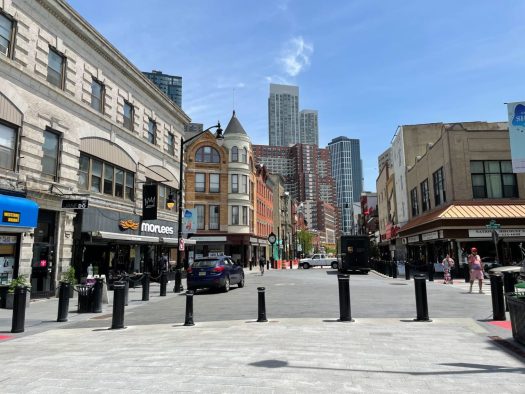What’s your main mode of transportation?
Like most Americans it’s probably vehicular.
Adam Gopnik’s New Yorker review of two new books:
Daniel Knowles’s “Carmageddon” is a serious argument against cars. Henry Grabar’s “Paved Paradise” is an anti-parking with an entertaining tilt. Both books make an argument for alternative like rapid transit, trains and trolleys, bicycles, but they mostly criticise the current systems.
“We pay an enormous price for our automotive addiction—in congestion, time wasted, neighborhoods destroyed, emissions pumped out, pleasant streets subordinated to brutal expressways—but telling the addict that the drug isn’t actually pleasurable is a losing game. There is some slight hope in saying that it isn’t healthy, and that the replacement for the drug is about as good. But understanding this emotional infrastructure in favor of cars is vital to imagining their possible replacement.
The grip of the car as a metaphor for liberty is as firm as that of guns, if perhaps with similarly destructive results.”
Any thoughts about parking? It’s the most contentious issue in many US cities. Gopnik references Donald Shoup’s 2005“The High Cost of Free Parking,”
Americans have been brainwashed to believe that they’re entitled to parking. Bitter battles about storing cars, and mis-belief that more cars = more business leads city leaders to backtrack on beneficial community projects like Open Street on Cookman Ave.


Parking has its very own official committee in Asbury Park, with enough stuff about car storage to discuss in lengthy monthly meetings. We propose a Transportation Equity Committee, but that’s another story.
Parking minimums were established by The Institute of Transportation Engineers, (which still exist in Asbury Park) whereby builders have to provide x-number of spaces for residences, and businesses, leading to cities’ swaths of asphalt dedicated to car storage, contributing in part to a housing shortage, suburban sprawl, and the development of neighborhoods where you can’t get anywhere to do or buy anything without a car.
Asbury Park is a “15 minute city”, as the now contentious concept is described in the article. It’s a walkable, rollable city, but private cars still rule. We propose on-demand transit to reduce car dependency, mitigate the parking problem, and to make our streets safer. Yes, that’s another story.
Now that parking minimums are being abolished in many cities, car owners are angry that they have to pay for it themselves. Oh the inequity of it.
What if we had reliable, affordable, convenient transit options? What if we didn’t need cars?
Read or listen to the book reviews:



















